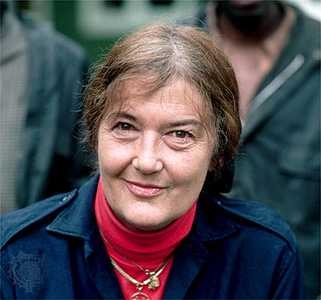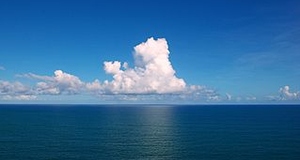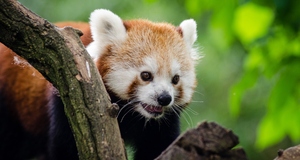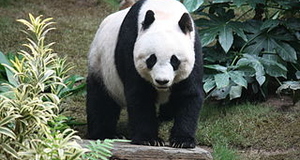From Earth Common Journal VOL. 3 NO. 1Dian Fossey's Controversial "Active Conservation" Proves Useful in Increasing Mountain Gorilla Awareness
IN THIS ARTICLE
KEYWORDS
AbstractAs a researcher and advocate of the mountain gorilla, Dian Fossey dedicated her life and career to understanding, protecting, and assisting the mountain gorilla by bringing awareness to the complexity of this animal and to the habitat needs required to support it. This paper presents the approach that Fossey used to increase mountain gorilla awareness: 'Active Conservation.' Virunga National ParkIt was Dr. Louis Leakey, renowned archaeologist and anthropologist, who realized that the mountain gorillas were facing the threat of extinction in the very same century that they were discovered (Fossey, 1983). It was for this reason that he hired Dian Fossey to carry out research on the mountain gorillas in the Rwandan mountains. In his life, Louis Leakey put a substantial amount of energy into promoting research on the behaviour of non-human primates. Along with hiring Dian Fossey for studies on gorillas, he had similarly been responsible for Jane Goodall's research on chimpanzees and Birute Galdika's work on orangutans (Hinde, 1978).
In Fossey's first career as an occupational therapist, she used resourceful tactics to remove children from constrained environments, such as taking them to creeks to dig for clay. While in Kentucky she worked with children from the Appalachians and described them as "penned-up wild animals" (Cara, 2007). Early on, it seemed as if Fossey took on the role of a protector and was dedicated to providing freedom to those who struggled for it. Through her actions she displayed how much she valued independence. In her early years, Fossey was dedicated to protecting disabled children, while later on, she switched her focus to protecting the mountain gorillas of the Volcanoes National Park. Although these environments were drastically different physically, both careers involved maintenance, work, play, and recreational occupations, which provided her with feelings of self-reward (Cara, 2007). The Majestic Mountain GorillaThe mountain gorilla subspecies was scientifically recognized and described in 1902 (Fossey, 1983). They are the largest of the great apes and have a range limited to a small lush area in Central Africa (Fossey, 1970). George Schaller's year-long study preceded Fossey's work and was the only research conducted on the mountain gorillas in their natural environment prior to Fossey's 18 years of field work. A mountain gorilla group exhibits extremely cohesive family unity, more so than any other primate group, a fact that impressed Schaller. Adult gorillas will fight to the death defending their families and young, which is why poachers have destroyed whole groups of gorillas when their goal was to capture only the infants for the zoo trade. Fossey believed that no animal was safe in Africa and would protect any that she stumbled upon. She had an extreme soft- spot when it came to children or animals. From the start, Fossey had tried to evict cattle herders from the park, kidnapping or shooting their livestock. These livestock owners would modify the gorilla's habitat in order to increase the available pasture for cattle grazing. This then forced the mountain gorillas higher up in altitude where the land was not conducive to farming and ranching (Cawthon, 2005). Although she felt guilty about harming the animals, they were responsible for destroying gorilla habitat. Poachers in the area would kill gorillas and sell their heads to westerners as trophies, hands as ashtrays, and infant gorillas as zoo animals. An infant gorilla in the zoo trade can earn a poacher up to 86,000 pounds (Mukanjari et al., 2010). As the poaching increased, and two young gorillas were stolen from Fossey's care and sold, her tactics toward anti-poaching became more extreme (Montgomery, 1991). Active ConservationAs previously stated, Dian Fossey referred to her extreme tactics as 'active conservation'. This included funding an army of anti-poaching scouts. When Fossey came across poachers, it was said that she would employ methods of torture, burning their possessions and occasionally kidnapping their children (Montgomery, 1991). After her favorite gorilla, Digit, and other familiar gorillas were slain, her anti-poaching war became personal. Not even Jane Goodall, who described Fossey as a good friend, could condone her extreme tactics. Many individuals claim that Fossey was responsible for bringing on her own death as much as the person who wielded the spear that split her skull in 1985 (Montgomery, 1991). She imposed her own laws on a sovereign nation and made enemies of the locals. Dian Fossey did not exhibit the care for the native people that she did for the mountain gorillas. Her attitude toward children and animals was very western in origin. It was in her 'active conservation' that she developed the African philosophy. She used stinging nettles as a method of torture, a concept borrowed from the African tradition. She painted hexes, cast spells, and pronounced curses (Montgomery, 1991). To the Africans, the idea of witchcraft was very real and Fossey used this to her advantage. Not only did she perform witchcraft, but she came to think of herself as a witch. Although it has been suggested that some of her personal accounts have been exaggerated, they are thought to generally encompass a truthful basis. She experienced a great deal of pain and emotional turmoil on her road to improve the lives of her beloved gorillas. Many of her claims, if not reality, may have been a way for her to emotionally enact some of the acts of hatred that she had craved to carry out. She was outraged by the atrocities committed against the mountain gorillas. It was not the Rwandan locals that Fossey angered as a result of her actions, so much as the authorities that she had diverted money away from through her tourist scare tactics. She did not like any intruders in her camp or near the gorillas. In articles and films, she displayed the Rwandan authorities as incompetent in protecting the mountain gorillas (Montgomery 1991). For obvious reasons, this did not sit well with Rwandan authorities and they reacted by approaching Fossey with their concerns and options to work out their differences. One of these options involved Fossey leaving the area, possibly returning at a later date. She felt like she did not have time to craft 'resource management plans' or wait for diplomatic solutions to be reached, so she employed her 'active conservation' as it was the only method she felt would be effective in protecting the gorillas (Montgomery, 1991). In her later years, former students spread rumors of her paranoia, alcoholism and aggressive behaviour toward tourists (Montgomery, 1991). The State Department seemed most anxious to arrange her departure, but tried to work out their differences in a seemingly diplomatic manner (Haye,s 1990). Both the Leaky Foundation and the National Geographic Society threatened to withhold their subsidies and by 1984, National Geographic had completely cut off Fossey's support. She then rallied one last time, using money from the Digit Fund (explained later, under 'Relevant Conservation Societies') and from her book Gorillas in the Mist and significantly increased poacher patrols. A report that she had written from the first quarter of 1984 stated that her patrols had cut 582 traps and spotted 67 poachers (Hayes, 1990). Despite her 'active conservation' philosophy and the fact that she either angered or scared a significant number of people, Dian Fossey spurred great advancements in the area of environmental protection and awareness. The Rwandan government has become supportive of gorilla conservation and has allocated more land around the park for cultivation and expansion (Nielsen & Spenceley, 2010). Dian's ContributionsFossey wrote that she didn't habituate the gorillas she studied to Africans because she feared that if they got too used to the locals they would face greater danger when poachers approached the gorilla groups. She did, however, mention that conservation ultimately rested in the hands of the Africans. She took great pride in the fact that she was the first person to fully habituate gorillas to the presence of humans (Fossey 1983). This habituation process took nearly three years and involved extreme patience and determination. Fossey spent countless hours in the bush observing the gorillas and recording their behaviours (Krajicek). Her relentless hours eventually paid off and Fossey was able to make the gorillas much more at ease with her presence. Her scientific accounts of the gorillas provided anthropologists and zoologists with the first specific behavioural development and social organization information regarding gorillas in their natural setting. Her work demonstrated the occurrence of infanticide and provided important information on reproductive characteristics in the mountain gorillas. Fossey and her co-workers described intergroup transfers and emigration between groups (Douglas, 1985). This work was conducted based on previous questions posed by Schaller. Fossey expanded on and answered many of Schaller's questions while completing her P.h.D. The questions he raised concerned concepts such as immigration and emigration, particularly the movement of females between different groups (Fossey, 2008). She also estimated gorillas' life expectancy to be 60 years, while Schaller had estimated this number to be only 30 years. To differentiate between the specific groups of gorillas in the area, Fossey allocated a number to each group. From her research, she was able to shed some light on the range of land that the gorillas would utilize, feeding ecology, vocalizations, and infant development (Douglas, 1985). It was in her later years that her focus moved away from studying the gorillas' behaviour and ecology and more toward conserving the species. In her book Gorillas in the Mist (Fossey, 1983), and the subsequent film based on the book, Fossey described how she manipulated local customs and religion to scare poachers away from her nature preserve. She encouraged locals to think of her as a witch and even painted pictures of herself on the entrances to the gorillas' territory (Fossey, 1983). The message of the film was used to show the selfish desires of zoos and tourism and furthermore the way that these industries exploited animals to make a profit. It was her identification with the gorillas as her animal family that was said to have justified the extreme measures she went to. The film, and resultantly Fossey's methods, have been criticized in some lights but have also been said to have symbolic importance by identifying a newly emerging ideology of animals at the time (Nash & Sutherland, 1991). The Ape LadiesAs women entered the conservation movement, tensions arose between men and women in regard to who was better qualified for the research. Dian Fossey played a large part in conservation during her time. The world of conservation was undoubtedly impacted by this leading female researcher. Fossey challenged the prevailing societal ideas of not only what we think but how we think. This is what helped to teach society to encounter nature as an intimate area that should not be disturbed (Forth, 1994). Fossey's drastic conservation measures definitely made people aware of the lengths that some would go to protect the natural world and the animals in it. Although there may have been problems with her ethics, she drew attention to the depleting numbers of the mountain gorillas and overall, helped to further the conservation movement. It was thought that Louis Leakey chose female researchers because he reasoned that they would be seen as less threatening to male primates and would, as a result, show less aggression (Kanner, 2006). He trusted his 'ape ladies' (Fossey, Goodall, and Galdikas) and admired their "patience, persistence, and perception" (Kahn et al., 1993). While Fossey worked with mountain gorillas, Goodall studied chimpanzees, and Galdikas became the foremost authority on orangutans (Dr. Birute Mary Galdikas Biography, 2011). Galdikas has worked tirelessly for close to four decades to save the orangutans and the forests in which they reside. Her major goal became bringing the plight of the orangutans to the attention of the world. Jane Goodall took a much more level-headed approach to her studies in comparison to Fossey. She was often described as cool and poised and would not raise an unseemly fuss, possibly because the chimpanzees she studied were safe (Montgomery, 1991). Where Fossey excluded the Africans from her studies, Goodall trained the Africans and expected them to succeed her, which was probably a better method in terms of future conservation education. Fossey felt as if she was forever stuck in Goodall's shadow (Montgomery, 1991). Fossey made significant discoveries, especially regarding reproduction and infanticide, as previously discussed. These discoveries seemed to be outshone by Jane Goodall's work done on chimpanzee hunting and tool use. Her work was more relatable to humans and more anthropomorphic in nature, which was elucidated by the chimps' warfare and cannibalism (Montgomery, 1991). Many individuals, including Jane Goodall and Birute Galdikas, could not understand what possessed Dian Fossey to rise to the extremes that she did in protecting the animals that she studied. Although both Goodall and Galdikas could sympathize with Fossey's devotion to her primate research subjects, they could not condone her behaviour.Continued on Next Page » Suggested Reading from Inquiries Journal
Inquiries Journal provides undergraduate and graduate students around the world a platform for the wide dissemination of academic work over a range of core disciplines. Representing the work of students from hundreds of institutions around the globe, Inquiries Journal's large database of academic articles is completely free. Learn more | Blog | Submit Latest in Environmental Studies |


















